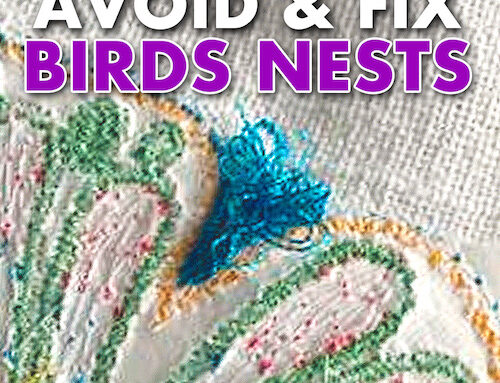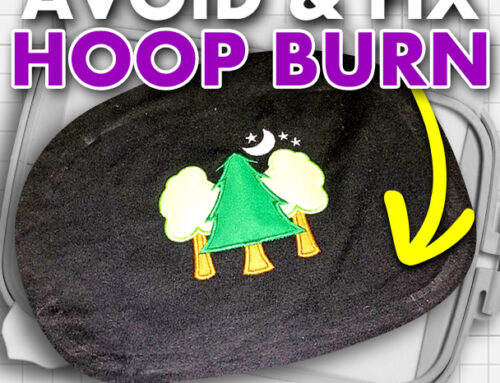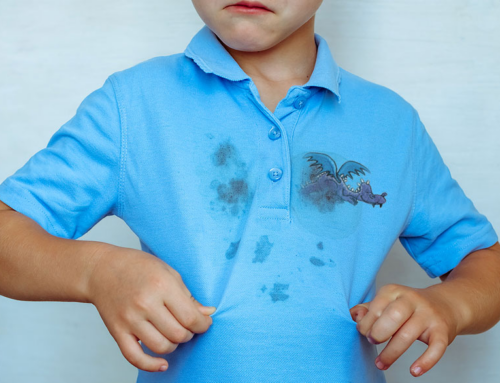From water bottles to cardboard boxes, there are so many things in our day-to-day life that are recycled, and it makes sense for us and the planet. So, is there such a thing as environmentally friendly embroidery? There sure is! Green embroidery. Not the color, but the concept.

Did you know that the textile industry is a major player in both the pollution of the environment and the movement to clean up that mess? Let’s discuss how our embroidery work affects the world around us and how we can help.
What Is The Green Movement?
The green movement has been around in America for a long time and looks at ways to preserve the environment.
What things pollute the environment?
The most significant form of textile pollution is.. CLOTHES! Discarded, unwanted clothes. The problem has become much worse due to the availability of cheap, almost disposable clothing. We wear that shirt, and when we tire of it, we throw it away. Torn pants? Throw them away. In the last 100 years, the modern attitude towards old clothing has changed drastically as back then, most people had “work clothes” and “church clothes.” Closets were small or non-existent because they did not own 30 shirts or more. People took better care of their clothes and recycled them into quilts, rugs, patches etc.
Who are the polluters?
As mentioned above, we are the greatest polluters- and second to that is the textile industry that produces the fabrics. If you are wearing a polyester blend shirt right now, it came from petroleum products and the amount of pollution to produce that shirt staggers the mind. Likewise, chemical dyes and treatments are routinely put into the environment sometimes because the cost is too great to dispose of them and due to regulations in the country producing them. Would it surprise you that the fashion industry is responsible for 10% of the pollution worldwide?

What is being done?
There is a growing movement in the fashion industry to choose more environmentally friendly fabrics and ask how the textiles designers are using are produced. Countries including the US, Australia, Japan, and many in Europe are joining together to ask more questions about “fashion pollution.” The fashion industry is using and recommending more natural “green fabrics” such as bamboo, hemp, cotton, and silk.
What Eco-Friendly Materials Are There For Machine Embroidery?
So let’s get back to embroidery and what we are using. It is not an easy choice to make a stand (or affordable for everyone); materials are harder to source and can cost more, but you are doing your part. You would need to make concessions, though there are some things we cannot do without. So here are some ideas for you to consider:
Fabrics
- Linen– Linen is a plant-based fabric made from flax that can be grown on rough terrain unsuitable for food production so the land can be utilized. It is hardy and can be produced and processed without chemicals
- Cotton– Cotton is a natural plant-based fiber used in clothing, furniture, and other textiles, such as rayon and synthetics. It is durable, breathable, and highly versatile.
- Rayon- Is a man-made fabric made from cellulose (wood fiber). Viscose rayon is usually made from bamboo. However, the chemicals required to transform it into fabric, including carbon disulfide, are unsafe for the people who work with the production.
- Polyester– Didn’t think this would not be here? RECYCLED polyester reduces the amount of pollution significantly, but it is still made from petroleum products.
- Silk – Silk is produced from silkworms and has varying production levels, but it is labor-intensive, and many are uncomfortable with “ranching” silkworms to produce it.
- Wool– Wool is available from sheep and goats who are not harmed in harvesting the fiber, but many are uncomfortable with the process.
Interested in learning more about fabrics used in machine embroidery in general? Check out our Main Fabrics Used In Embroidery blog by clicking here!
Threads

- Embroidery thread comes in most of the above fibers, but there are limitations to their use. Polyester is the most common and usually the best choice- but several of the largest thread companies offer recycled polyester thread. Make sure to check their websites to see what they offer.
Want to learn more about embroidery thread? Click here to read about the different types of machine embroidery thread and when to use them.
Backings
- Many stabilizers feel like plastic but did you know they are not? Many are made from cellulose (wood fiber), chemical starch, or cotton and do not harm the environment. Companies worldwide are now using shredded discarded clothing as a base for “fabric-like” stabilizers. As mentioned above numerous companies you already shop with are offering environmentally friendly stabilizers, backing, and toppers. Make sure to check the site info for more.
Want to know more about stabilizers and when to use them? Click here for an easy stabilizer guide to make your next embroidery project with professional results.
Recycling Fabric In Your Stash To Help Save The Environment
Recycling fabric is one of the oldest and easiest ways you can help! Repurposing fabric scraps is as old as clothing and easy to do. Before discarding that shirt or pants- ask yourself if there is any way you can use that fabric before you toss it out.
Who doesn’t like to save money while saving the environment? We have many suggestions to recycle your leftover fabric scraps. Click here to read ideas on recycling embroidery scraps, including quilting, fabric buttons, and practice material!

Maybe you’ve just had an “oopsy” moment and ruined your garment. Instead of adding them to the high amount of textile pollution, why not fix and make your garment better with embroidery?
Click here to learn how to save your garments with embroidery while being creative and fashionable.
Eco-Friendly Machine Embroidery Ideas
So, we have a lot of information, but what kind of things can we make? Let’s go over ideas to get you started. You can take things you already have and reuse them or use scraps and fabric from your stash. These items will also help you reduce the amount of waste you put into the environment.
• Tote bags
• Lunch bags
• Reusable diapers
• Washcloths
• Why not create your own mottos and slogans to promote being environmentally friendly? If you’re green, say it proudly!
Things To Remember About Green Embroidery
We have looked at many facets of green embroidery, but here are some final considerations you might want to consider when committing to using green embroidery. These are nominal for most of us, but you still need to be aware.
- Electricity – Being green means thinking ahead. If you’re not using your machine- turn it off. Reduce as much as you can!
- Take care of your machine – A machine which works hard will break down faster and in some cases can use more electricity! Keep it clean, and in the case of multi-needle machines, follow your instructions on oiling and maintenance.
- Cost – Many materials come at a price. Unfortunately, there is a cost of being green. Many of the green materials mentioned can cost more, but as more and more embroiderers begin to use them and the demand rises, prices will become more reasonable.
Conclusion: Machine Embroidery And Being Green
So now we know more about the green movement and the materials we use, and how we can play a part in taking care of our amazing planet. Here are some things to keep in mind.
- Where do you get your materials? If you are committed to using green materials, research before you buy. You can also check out your local thrift store for recycled materials.
- What are your materials made of? Make sure to ask questions!
- Can you recycle? Don’t throw something away that you can recycle into something else!
P.S. Try our free Embroidery Legacy Design Kit that includes 11 designs, or check out our giant database of close to 30,000 quality machine embroidery designs. Use these designs to help create your next eco-friendly project with machine embroidery!






Thank you for this article! Ours is not the most sustainable craft, so it’s good to go green in as many ways as we can.
We couldn’t agree more Luci! Thanks for reading 🙂
Thanks for this education! We all need to know.
Thanks for reading Helen 🙂